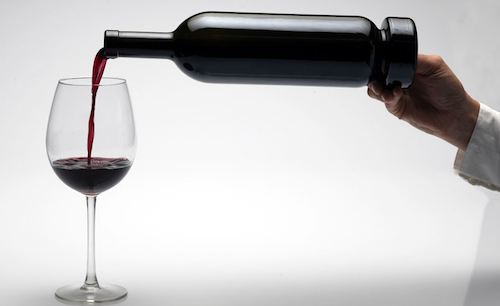 The air about wine makes us second guess our instincts sometimes. Especially in the presence of those who speak Grape. We are nuts about wine, but we’re in the corkscrew club, if you know what I mean.
The air about wine makes us second guess our instincts sometimes. Especially in the presence of those who speak Grape. We are nuts about wine, but we’re in the corkscrew club, if you know what I mean.
On a recent night out, we humbled ourselves to ask the sommelier for a primer on breathing: how it differs than decanting and which method is deployed when?
He told us that aerating (or letting the wine breathe) is pretty mandatory for most wines and recommends anywhere from 20 minutes to an hour (not that you should call the restaurant ahead of time). Megan Hadley, a writer at c-ville.com goes as far as suggesting “anywhere from an hour or two for a macho 2008 California Cab, and up to 24 hours for an intrepid 2005 Bordeaux.”
Hadley goes on to point out that often aerate and decant are misused: “There are two reasons to pour a wine out of its bottle before drinking it. In young wines, pouring before drinking serves to aerate the wine, or to ‘let it breathe.’ In older wines, pouring before drinking serves to separate the wine from its sediment. So, while many people call both practices ‘decanting,’ more accurately, the first should be called ‘aerating’ and the second, ‘decanting.’
Aha!
So, which wines should you decant, I mean aerate by way of decanting?
If the wine is young, exposing it to more oxygen will help it open up. This is true for many whites and every young red wine.
Bright, high-acid wines such as Sauvignon Blanc are made to be consumed young, and decanting may actually soften the acidity that gives them their bright, refreshing character.
You can aerate a young wine simply by shaking it up and pouring it portion by portion into your decanter. Replace the cork and shake vigorously between pours. Repeat until the bottle is empty.
Do this only with young wines. Older wines may have sediment that will be mixed back into the wine by shaking.
Decanting older wines is more about cleaning up your wine so it doesn’t get stuck in your teeth. There are plenty of lovely decanters out there, but as the idahostatesman.com points out, ” if you’ve got a large mason jar or a glass juice pitcher, you’re set.”
To decant older wines, leave it standing up for 24 hours or so to make sure all the sediment is at the bottom. Then, the basic technique is to hold a light under the neck or shoulder of the bottle, watch the wine flow through the neck, stopping when you start to see sediment.
Also, be gentle opening the bottle so you don’t shake it up.
Now, that wasn’t so hard after all.


Ah, but for those of us with high aesthetic standards, decanting hides an ugly label! See http://sedimentblog.blogspot.com/2011/11/decanting-wine-for-appearances-sake.html
The wider variety of tableware is definitely a bonus to ditching the bottle. Great post, thanks for sharing.
Cheers,
DIA